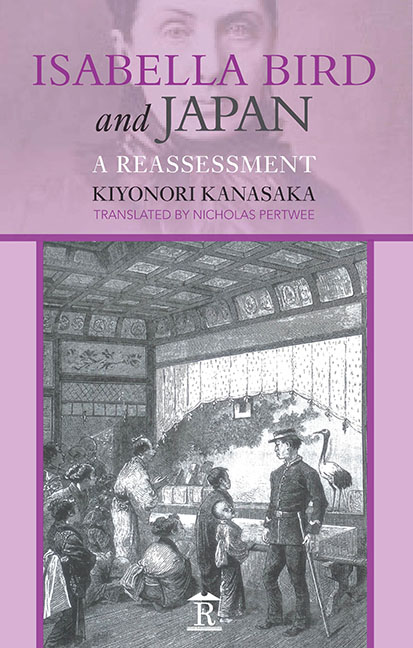Book contents
- Frontmatter
- Dedication
- Contents
- Foreword
- Author’s Preface to the English Edition
- Translator’s Preface
- Preface to the Japanese Edition
- Maps of Isabella Bird’s Travels in Japan (Figs 1–3)
- Chapter 1 Interpreting Bird’s Travels and Unbeaten Tracks in Japan
- Chapter 2 Isabella Bird – A Life of Travel
- Chapter 3 Aspects of Bird’s 1878 Visit to Japan
- Chapter 4 Access and Support in Japan
- Chapter 5 The Legacy of Bird’s Stay in Japan
- Endnotes
- Postscript to the Japanese Edition
- Chronology: The Life of Isabella Bird
- Bibliographies
- Index
Chapter 2 - Isabella Bird – A Life of Travel
Published online by Cambridge University Press: 06 May 2022
- Frontmatter
- Dedication
- Contents
- Foreword
- Author’s Preface to the English Edition
- Translator’s Preface
- Preface to the Japanese Edition
- Maps of Isabella Bird’s Travels in Japan (Figs 1–3)
- Chapter 1 Interpreting Bird’s Travels and Unbeaten Tracks in Japan
- Chapter 2 Isabella Bird – A Life of Travel
- Chapter 3 Aspects of Bird’s 1878 Visit to Japan
- Chapter 4 Access and Support in Japan
- Chapter 5 The Legacy of Bird’s Stay in Japan
- Endnotes
- Postscript to the Japanese Edition
- Chronology: The Life of Isabella Bird
- Bibliographies
- Index
Summary
WE CAN NOW begin looking at Isabella Bird as a person. Her life revolved around her overseas journeys and so I have placed them centre-stage and categorised them into six periods. Periods I and II cover the time up to her visit to Japan in 1878, Japan takes up Period III and Periods IV to VI describe the journeys she made after Japan. I have divided up her career in this way because to get a proper feel for her trip to Japan, which to my mind is the pivotal point in her nearly fifty years of travel, an understanding of her life and the journeys she made before and after it is necessary.
The map at Fig. 1 provides the background for these events. Bird's Japan journey is the first one in Period III and the map shows that after her trip to Japan her travel horizon shifted towards Asia. Morocco occupies Period VI because in response to an invitation from Ernest Satow the plan had been for her to travel to China as well, as Satow had gone from being Minister Plenipotentiary in Japan to take up the same post in China in 1900, and Bird knew him from her time in Japan in 1878. Her health, however, did not allow all this and the result was that she just visited Morocco where Satow had been Minister. In the sense of it being in the Islamic sphere of influence, Morocco was an extension of her Central and Western Asia trips, and we should remember that after Japan her journeys played out in the great expanse of the non-Christian world, mainly in Asia.
This map is extremely important for my study of Isabella Bird. Many years of research and an immense amount of work lie behind my original drawing, and the finished map that the leading Japanese cartographers Mori Mitsutoshi and Mizutani Kazuhiko have produced is a work of great originality which is relevant for this chapter too. Where the routes she took on her journeys are concerned, the effects of redrawing them on a very significant number of large-scale maps are suitably shown on this small-scale example that has been made from repeated applications of the map-making technique known as area generalisation, which is a process of reduction and assimilation.
- Type
- Chapter
- Information
- Isabella Bird and JapanA Reassessment, pp. 15 - 74Publisher: Amsterdam University PressPrint publication year: 2017



